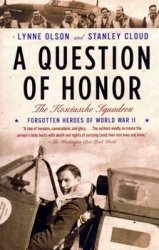Figure 7.3 Aleksei Radkov, “The Illiterate Is Just as Blind. Disaster Awaits Him Everywhere” (anti-illiteracy poster). 1920.
Source: Hoover Institution Archives.
Ates scour the Russian provinces for a set of dining-room chairs, one of which is thought to contain precious jewels sewn into its upholstery. Along the way, the story mocks monarchists (and disturbingly suggests that they are still plotting - though ineffectually - against Soviet power), bureaucrats, chess players, priests, and nearly every aspect of everyday life a decade after the revolution. While the novel never challenges the legitimacy of communist rule, neither does it hide the hypocrisy and thievery that continue to characterize everyday life. The novels success led to a sequel, The Golden Calf, even though at the end of the first novel
Ostap Bender was killed off (he is resurrected for the second). Ilf and Petrov’s novels, especially The Twelve ChairS’ remained popular throughout the Soviet period and were also made into several film versions (including, in the west, by American director Mel Brooks, whose parents were born in Kiev, then in the Russian Empire).
Films were an obvious choice for communist propaganda. The moving picture was still enough of a novelty to attract mass audiences; it was appropriate for both literate and illiterate audiences, and was the quintessence of modernity. Most early Soviet movies were agitki’ short documentaries showing revolutionary events or leaders. But many old films, mainly of foreign origin, were discovered on the shelves of closed movie houses; it was titles like The Cabinet of Doctor Caligari and The Skull of the Pharaoh’s Daughter that Russians were watching in the first years after the revolution. By the mid-1920s, however, the Soviet film industry, from studios to distribution to movie houses, was taking shape. One of the first successful longer films (as opposed to short agitki) was The Little Red Imps (1923), about two Ukrainian youngsters and an American black (!) during the Civil War in Ukraine. Another early classic was the 1924 film Mr. West in the Land of the Bolsheviks, which parodied the American cops-and-robbers genre while giving it a Soviet twist.31
In the second half of the 1920s, however, increasing numbers of increasingly sophisticated films were made in the USSR, including Sergei Eisenstein’s masterpieces Strike (1924) and Battleship Potemkin (1925). On a more popular level, Katka the Reinette Apple Seller (1926) turned the camera on the contradictions of NEP life in Leningrad, juxtaposing fat traders, flapper girls in garish lipstick, and smoky casinos where nepmen and their molls danced the foxtrot. Just as the rest of the economy was gradually recovering under NEP, so too was the film industry. But even in 1928 only 123 films were released and 300 million tickets sold - this at a time when in the USA 100 million people attended the movies weekly.32
While many poets and writers had left Russia rather than live under communist rule, others stayed, either by chance or by conviction. The poet Vladimir Mayakovsky not only welcomed the revolution but wrote poems celebrating it, like “150,000,000” and “Poem about [my] Soviet Passport.” Writers tried to come to grips with the new Soviet realities, like Boris Pilnyak in his Naked Year (1921), which described the devastations of the Civil War period. Others tried to come up with an entirely new style of writing to reflect the new proletarian dictatorship under Soviet rule. The “Proletkult” (short for proletarian culture) tried to come up with a new, fully proletarian brand of literature cleansed of bourgeois influences. But their actual achievements in writing were minimal and the concept of proletarian culture itself was criticized by Trotsky. Even Lenin had rather traditional tastes in literature, preferring classical poetry to the modern “proletarian” stuff.




 World History
World History









